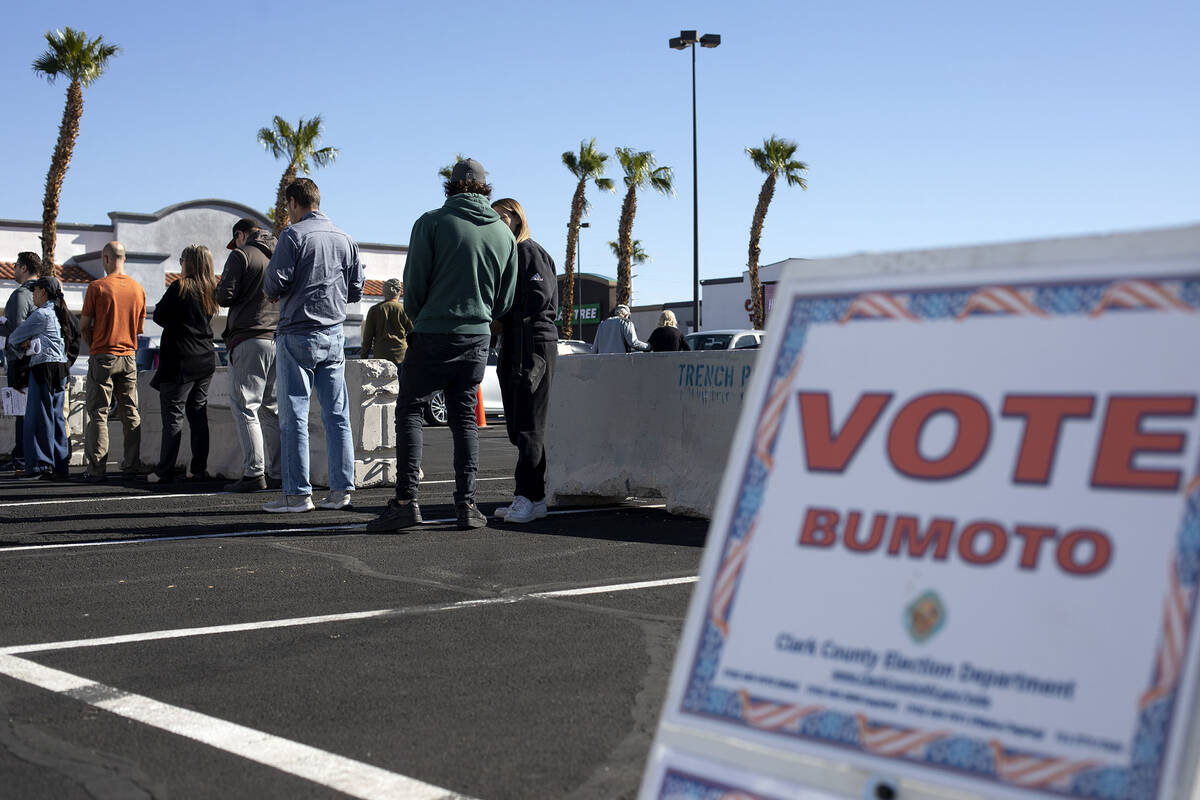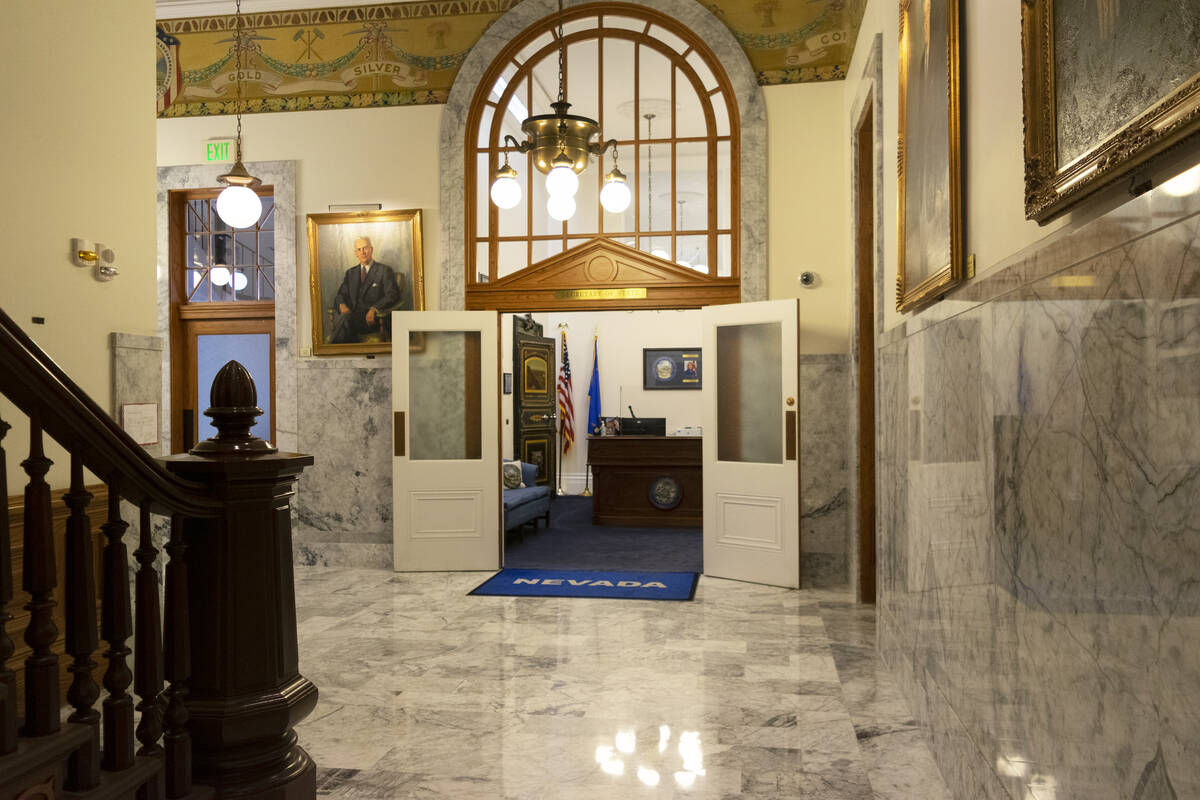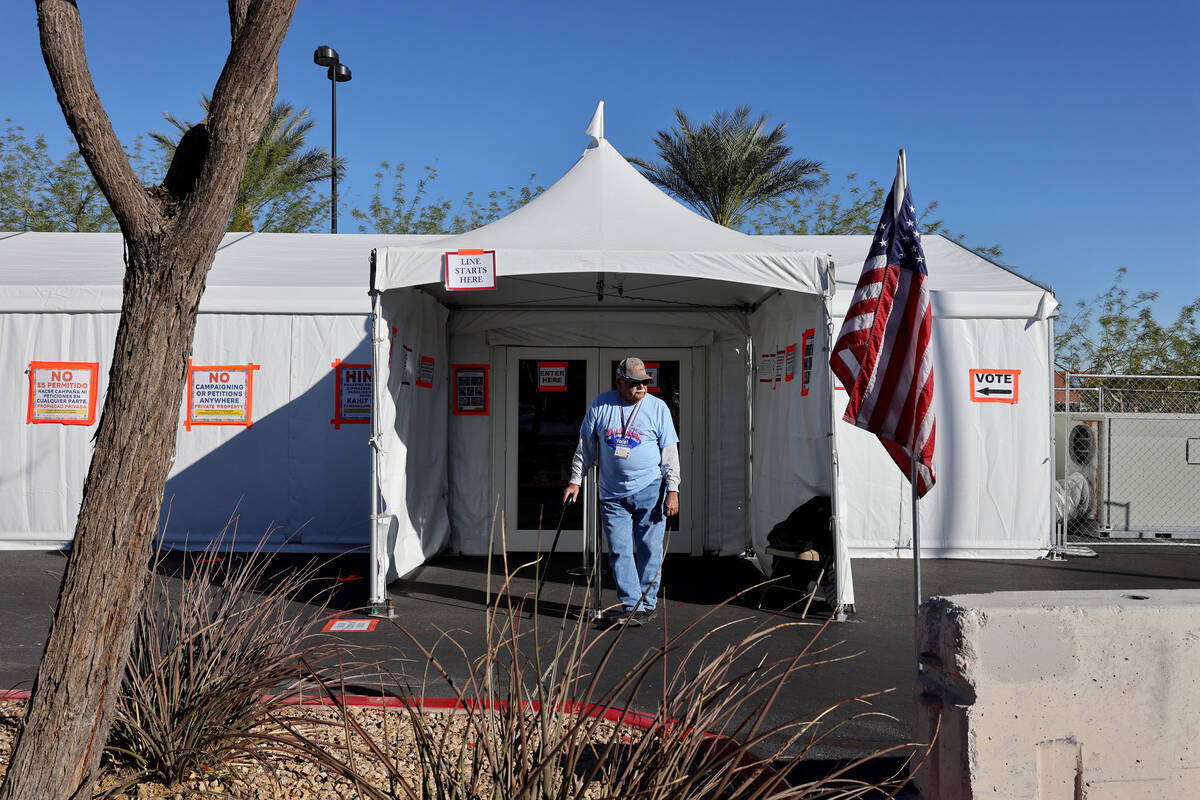At state’s election center, work to verify votes goes beyond Nov. 8
RENO — For many, the process through which a vote cast at their local voting center ends up counted in local and statewide races can be a mysterious and confusing one.
But Mark Wlaschin, deputy secretary of state for elections in October 2020, says “There’s nothing magical about it. It’s complicated. It’s convoluted. It’s hard to understand.
“It’s people. It’s us. It’s Nevadans just doing our job,” said Wlaschin.
Here’s what you need to know about how votes are counted in the Silver State and what running a safe and secure election looks like at the secretary of state’s election division.
Before Election Day
Preparations for Election Day at the state’s election night center begin months ahead of time.
“Before even Election Day comes, there is such a tremendous amount of effort that goes into building the elections IT infrastructure to make this possible,” Wlaschin said.
The voting infrastructure is incredibly robust, allowing voters to walk into polling places from all over a county to vote on their precinct-specific ballot based on their address.
“There’s an extensive process that here at the state we work on and at the county level as well, to make it so that the election results that come from a voter standing in front of the machine that cast their ballot is able to see the accurate results in a timely manner,” Wlaschin said.
In the two weeks prior to Election Day, voters have an opportunity to cast their ballots in person during the early voting period or to vote by mail, an option started during the pandemic and made permanent in 2021. Counties are able to start counting the votes they’ve received through mail ballots 15 days prior to Election Day.
Election Day
On Nov. 8, polling sites across the state are set to open at 7 a.m. and stay open until 7 p.m. By statute, polling sites will stay open until all those in line at 7 p.m. have been allowed to vote.
If there’s delays in a poll site opening, which can be caused by difficulties or weather, courts can rule to keep polls open later to make up for the missed time. This can cause election results, even preliminary ones, to be released even later in the evening on election night.
“I describe it when I’m onboarding new team members as every election is like one of my kids — they’re unique and they’ve got their own personality quirks and they’ve got their own problems,” said Tim Horgan, who works with the IT team.
Throughout Election Day, counties are counting the ballots they’ve received and are sending files to the state elections division, whose workers, in turn, are verifying the numbers. An hour after polls open, at 8 a.m., county officials are able to start counting votes cast during early voting.
Counties transmit election data securely to the secretary of state’s election center through a process known as a file transfer protocol. Once they’ve done that, they give the office a call and let them know they’ve received a file.
Polls close
County clerks and election officials are in constant contact with the secretary of state’s office, alerting state officials when polls have closed for the night in the county after the last person has been allowed to vote.
Once polls are closed, county election workers begin the “elaborate logistics process” that comes with returning voting places to their original forms as libraries, stores and convention centers.
“Everything, as you can imagine, has a chain of custody. There’s inventory associated with it, down to the results drives,” Wlaschin said.
When the world will hear the first results is all dependent on when every poll across the state has closed, a factor completely out of the hands of the secretary of state’s office.
“It could influence somebody just sitting there on their phones looking at our site. Refresh, refresh, refresh. ‘Look at that. In the contest for governor, one candidate is already ahead. Why should I bother voting? It’s already been decided, right?’” Horgan said.
That’s why state law prohibits releasing election results until all voters have cast their ballots.
After Election Day
Final, unofficial results of the election aren’t available for a few days following the election. That’s because mail ballots — which must be postmarked by Election Day and received by the following Saturday — remain to be counted. And mail ballots with mismatched signatures can be validated by a voter up to the Monday following Election Day.
Those who fill out a provisional ballot have up to three days after Election Day to verify their identity. The state then does a provisional comparison process to ensure those who filled out such a ballot both verified their identity and only voted once. Those that are verified are then added to the count.
The state is required to finish counting no later than the seventh day after the election.
“Really, at this point, a week after the election, the results are out. They haven’t been finalized per se by the county commissioners’ canvass but most people see who won and are at least aware of it,” Wlaschin said.
County commissioners then have three days following that, or 10 days after Election Day, to canvass, or certify the votes from their respective counties, unless an elections board elects not to certify results.
“There’s always the possibility,” Wlaschin said. “It came up during the primary where Esmeralda, Lander, those two counties did not initially want to certify and canvass their vote without some sort of additional action. In both cases, it was kind of a post-election hand audit prior to the canvass.”
The “finish line” comes when the justices of the Nevada Supreme Court are presented with the official election results in large, official-looking books. Once they approve, the results are official.
This year, the signing will occur on Nov. 22. The canvassing of the votes by the Supreme Court occurs on the fourth Tuesday of November.
Those who wish to request a recount must do so within three days of the Supreme Court’s canvass of votes.
“There’s a requirement by statute that they have to recount it the same way they counted in the first place,” Wlaschin said.
As for why it takes longer for the public to see official election results, Horgan pointed to recent changes in how voters are allowed to cast their ballots, including through the mail and during early voting.
“We’re giving people the opportunity to vote early, vote by mail, vote in person, and all of that’s got to siphon into one final tabulation and work properly and it doesn’t just happen,” he said.
Prepping for the next election
Wlaschin said preparations for the next election will begin just two weeks after this one is complete. Those preparations begin with a meeting of all the state’s county clerks in Las Vegas, during which officials discuss lessons learned and what’s anticipated to be discussed during the upcoming Legislative session.
And it’s not just the elections that the office has to manage. The office is already beginning to prepare for the candidate filing period for the presidential primary, which begins on Oct. 1, 2023.
“We’re less than a year out already, and we’re already behind basically, which is terrific,” Wlaschin said.
The list of things the office has to squeeze in between candidate filings and elections is long — regulatory reviews, further implementation of bills the Legislature passes, routine evaluations, to name a few.
“And trying to remember that we have families,” Wlaschin said.
Contact Taylor R. Avery at TAvery@reviewjournal.com. Follow @travery98 on Twitter.



















